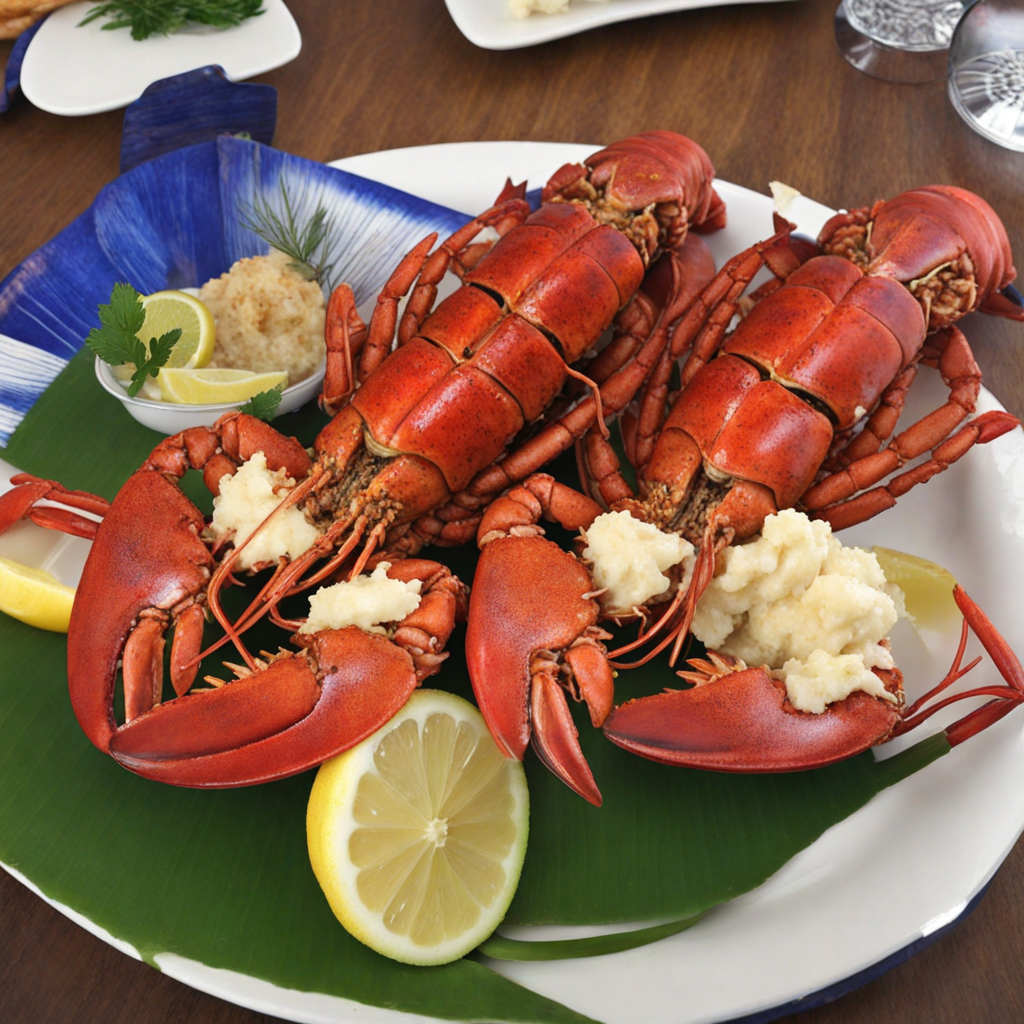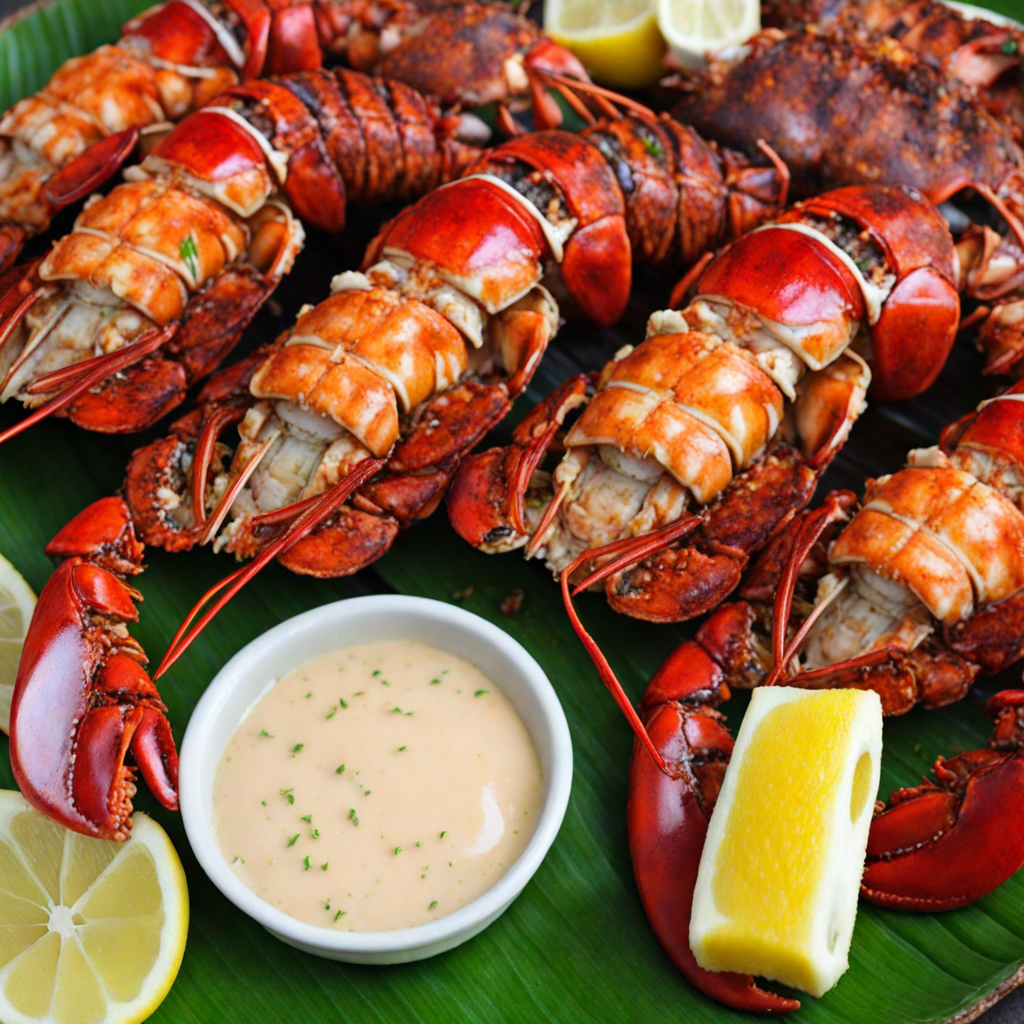Lobster Tails
Lobster tails from the Solomon Islands offer a culinary experience that highlights the region's rich marine biodiversity and vibrant flavors. These succulent seafood delicacies are known for their sweet, tender flesh, which is often enhanced by the pristine waters in which they are harvested. The lobsters are typically grilled, steamed, or baked, allowing their natural flavors to shine through while adding a smoky char or a touch of sea salt that elevates each bite. The bright, vivid colors of the freshly prepared lobster tails reflect the lush, tropical environment of the islands, making them as visually appealing as they are delicious.
The unique taste of Solomon Islands lobster tails is characterized by a delicate sweetness and a firm, juicy texture that sets them apart from other seafood. They are often served with traditional local accompaniments such as coconut sauce, fresh lime, and a variety of tropical fruits, which complement the richness of the lobster meat. The infusion of local spices and herbs brings an exciting twist to the dish, creating a harmonious blend of flavors that is both exotic and comforting. Each mouthful is a celebration of the ocean's bounty, delivering an unforgettable sensory experience.
How It Became This Dish
The Rich History of Lobster Tails in the Solomon Islands The Solomon Islands, an archipelago located in the South Pacific, is renowned for its breathtaking landscapes, vibrant cultures, and rich biodiversity. Among its culinary treasures, lobster tails stand out as a beloved delicacy, symbolizing both the islands' abundant marine resources and the cultural significance of seafood in local traditions. The story of lobster tails in the Solomon Islands is a fascinating journey through time, reflecting the islands' history, community values, and evolving culinary practices. Origins of Lobster in the Solomon Islands The history of lobster consumption in the Solomon Islands is intricately linked to the indigenous peoples who have inhabited the islands for thousands of years. The Solomon Islanders have a deep-rooted connection to the ocean, relying on its resources for sustenance, trade, and cultural practices. The region's warm tropical waters are home to various species of lobsters, which were accessible to the locals long before external influences arrived. Archaeological evidence suggests that the Solomon Islands were settled around 30,000 years ago, with the Lapita people being among the first to inhabit these lands. This ancient culture practiced fishing and gathering seafood, including lobsters, which were likely featured in their diets. As the centuries progressed, fishing techniques evolved, and the culinary practices surrounding seafood, including lobsters, became an integral part of the islands' cultural identity. Cultural Significance Lobsters hold a special place in Solomon Islands' culture, often associated with gatherings, celebrations, and communal feasts. Traditionally, seafood has been a communal food, bringing families and communities together. Lobsters, being a more luxurious and sought-after delicacy, are often reserved for special occasions, such as weddings, festivals, and important rites of passage. The act of sharing a lobster meal symbolizes unity and hospitality, reflecting the values of kinship and community that are central to Solomon Islander life. In many coastal villages, lobsters are not just food; they are part of the local economy and cultural expression. Fishermen often engage in traditional fishing practices, using hand nets and spears to catch lobsters, which fosters a respect for the maritime environment. This sustainable approach has been passed down through generations, highlighting the importance of preserving marine biodiversity while providing for the community. Development Over Time As the Solomon Islands entered the colonial era in the late 19th century, the introduction of foreign influences began to reshape the culinary landscape. European colonizers brought new cooking techniques and ingredients, which mingled with traditional practices, creating a unique fusion of flavors. Lobster tails started to appear on the menus of colonial establishments and later in the burgeoning tourism industry, appealing to visitors seeking authentic local experiences. During the mid-20th century, with the rise of tourism in the Solomon Islands, lobster tails gained popularity among both locals and tourists. Fine dining establishments began to feature lobster as a signature dish, often prepared with local ingredients such as coconut milk, fresh herbs, and spices. The method of cooking also evolved, with grilling and baking becoming popular alongside traditional steaming and boiling methods. This culinary evolution showcased the adaptability of Solomon Islanders, who embraced new techniques while preserving their cultural heritage. Modern Culinary Trends In recent years, the culinary scene in the Solomon Islands has experienced a renaissance, driven by a growing interest in local food systems and sustainable practices. Chefs and home cooks alike are increasingly focusing on farm-to-table concepts, emphasizing the use of fresh, local ingredients, including lobster. The rise of culinary tourism has further spotlighted lobster tails, with visitors eager to experience the authentic flavors of the islands. Today, lobster tails are often featured in various culinary styles, from traditional to contemporary fusion dishes. Local chefs experiment with diverse flavors, presenting lobster in salads, curries, and pasta dishes, showcasing its versatility. Furthermore, the resurgence of interest in traditional cooking methods has led to a revival of ancient techniques, such as cooking lobsters in an underground oven, known as a "umu," which imparts a unique smoky flavor. Sustainability and Future Considerations As the popularity of lobster tails continues to grow, so too does the need for sustainable fishing practices. The Solomon Islands' government and local communities are increasingly aware of the importance of managing lobster populations to prevent overfishing and ensure the long-term health of marine ecosystems. Initiatives aimed at promoting sustainable fishing practices, such as establishing marine protected areas and regulating fishing seasons, are crucial for maintaining the delicate balance between cultural traditions and ecological responsibility. Local communities are also becoming more involved in the conversation around sustainability, advocating for the protection of their marine resources while still preserving their cultural heritage. This shift towards sustainability reflects a broader global trend, as consumers become more conscious of the environmental impact of their food choices. Conclusion Lobster tails in the Solomon Islands embody a rich tapestry of history, culture, and culinary innovation. From their origins as a staple of indigenous diets to their status as a prized delicacy in modern cuisine, lobster tails tell the story of the islands' deep connection to the ocean. As the Solomon Islanders navigate the challenges of contemporary culinary trends and environmental sustainability, the future of lobster tails will undoubtedly continue to evolve, all while remaining a cherished symbol of community, celebration, and the vibrant culture of the Solomon Islands.
You may like
Discover local flavors from Solomon Islands







